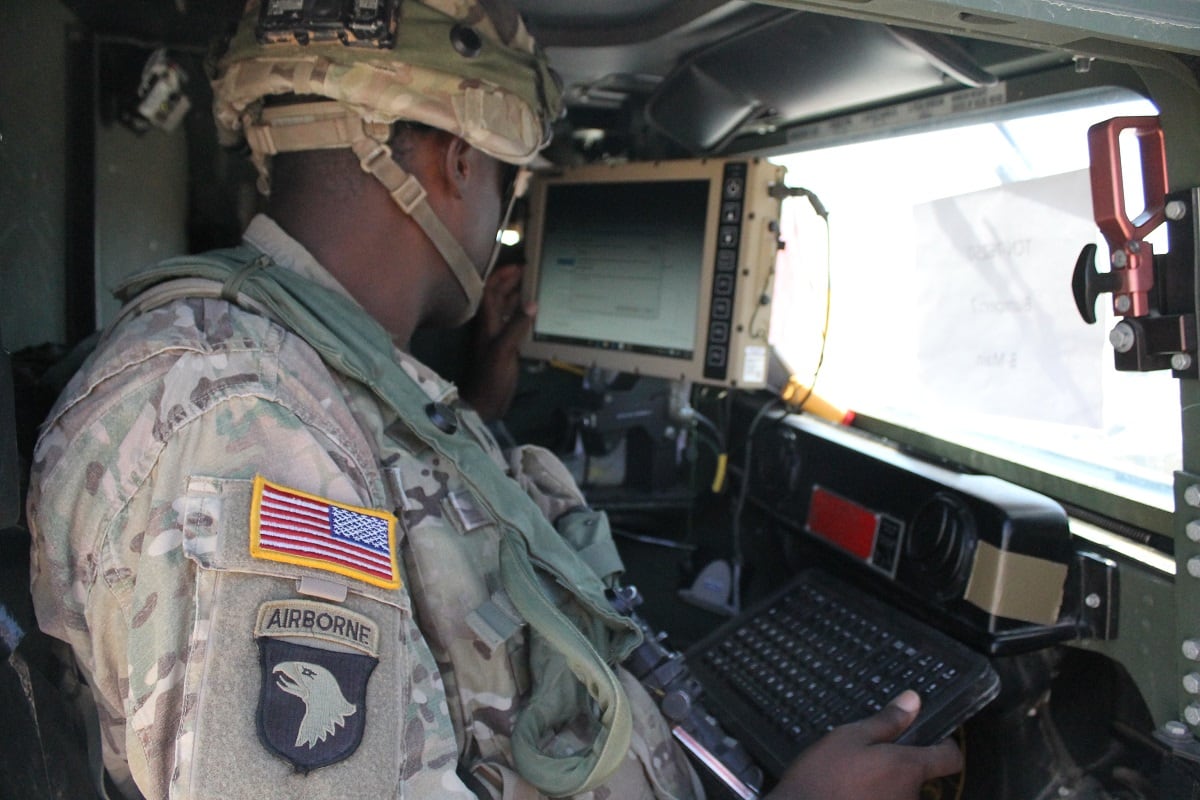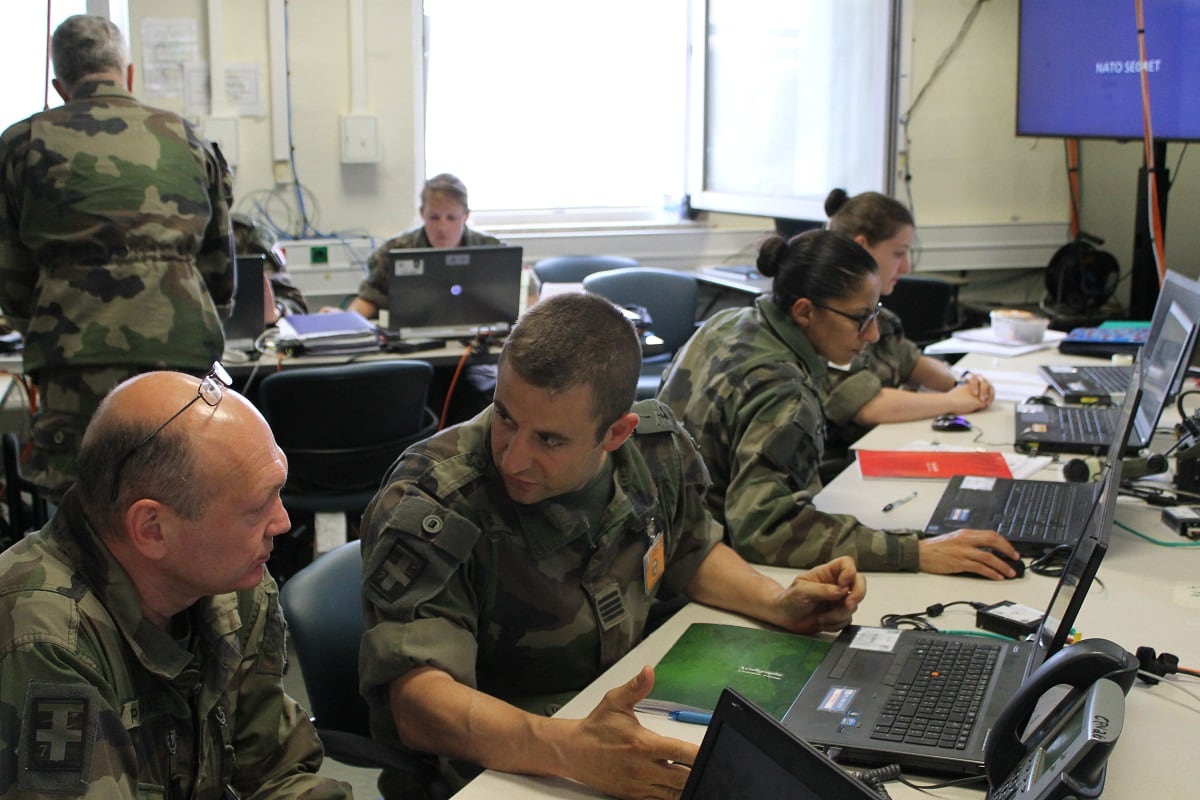ABERDEEN PROVING GROUND, Md. — Critical fielding plans for major elements of the Army’s revamped network could fall apart if Congress does not reach a budget deal soon, according to service leaders in charge of network modernization.
Should Congress opt to extend the current continuing resolution, which funds the government at fiscal 2019 budget levels, past the Nov. 21 deadline, the Army will struggle to get more capable radios and other elements of its new and improved network to units. While a shorter extension would be less painful, a yearlong continuing resolution, or CR, would derail the efforts.
“The whole fielding plan will collapse without a budget,” Army Secretary Ryan McCarthy said during a recent trip to Aberdeen Proving Ground, Maryland, where he was briefed on the service’s efforts to deliver a modernized network to the force.
RELATED

“The longer [the CR] goes, I think it can definitely impact the schedule. If it bleeds into the next calendar year, you can look at a day-for-day slip” until a budget is passed, he said, adding that the longer a CR exists, the more likely the Army will have to reformulate its fielding plan because the units originally intended to receive the equipment won’t be available to test the new capabilities and train with them.
The Army is scheduled to conduct three major test events next year of its network. The 1st Brigade of the 82nd Airborne Division will assess the first capability set of the new Integrated Tactical Network, or ITN, in February. The manpack and leader radio operational test, which is part of the Handheld, Manpack, and Small Form Fit radio program, is scheduled for the third quarter of FY20.
Furthermore, at next year’s Defender Europe military exercise, the Army will use the Command Post Computing Environment, the Tactical Server Infrastructure and a number of ITN’s initial capabilities to assess interoperability with partners and allies.
If a CR extends past the first quarter of the fiscal year, the Army will be unable to test radios with a new waveform, known as TSM, as part of its HMS radio program. The current plan is for the 1st Brigade of the 82nd to test the radios in the third quarter of FY20.
The TSM waveform is critical to a modernized network because it provides greater capability than what is currently fielded. The radios with the TSM waveform are more secure, can connect a larger number of radios on a single network, can easily tie into coalition partners’ communications, and can more effectively push voice and data.
If the Army is faced with a yearlong CR, the HMS radio program would be limited to a $3.7 million budget out of $35.6 million requested in FY20. Without the funding, the manpack and leader radio operational test won’t happen until FY21, and the Army will likely have to shift to a different unit to conduct the test because of the operational tempo of the 82nd, according to Maj. Gen. Peter Gallagher, who is in charge of the Army’s network modernization.
Additionally, if testing can’t begin until FY21, the Army’s full-rate production schedule will slip.
“We’re confident that our radios will support the waveform, but we’re talking about maybe a situation where we couldn’t ramp up production to meet the capability set fieldings without essentially ordering stuff in the absence of that operational test, which is not exactly a best practice,” Gallagher said.
The Army is planning to field the radios to four units in 2021: the 1st Brigade of the 82nd; the 173rd Airborne Brigade Combat Team; the 3rd Brigade of the 25th Infantry Division; and the 2nd Brigade of the 82nd.
A long-term CR would also prevent the procurement of critical ITN communication enhancement equipment that will also be delivered to the four planned brigade combat teams in FY21.
Without the equipment, the Army would have to delay communication patches for light infantry formations.
A yearlong CR would affect the fielding of the Tactical Server Infrastructure, or TSI, which is also facing a potential FY20 budget cut. The Senate Appropriations Committee’s Defense Subcommittee cut its procurement line by more than half, and it’s unclear whether that decrement will survive conference committee.
The TSI would only have 26 percent of its funding under a yearlong CR, which means the procurement of TSI servers, both small and large versions, will be delayed.
A $45.86 million reduction in FY20 would prevent the fielding of 101 large variant servers and 184 small variants, which means two corps, three divisions and 10 brigade combat teams — including units like the 18th Airborne Corps, the 1st Cavalry Division, the 101st Airborne Division, III Corps and 4th Infantry Division — wouldn’t get the updated server hardware needed to run the Command Post Computing Environment, Gallagher said during a briefing with McCarthy.
And because the servers used to run the Command Post Computing Environment will be delayed, so will the rollout of the CPCE itself. Units like the 10th Mountain Division and the 335th Theater Signal Command have requested accelerated fielding of the CPSE and TSI capability.
Currently fielded servers are cumbersome to initialize and are not appropriately protected to deal with emerging cyberthreats. The Tactical Defensive Cyber Operations Infrastructure capability, which protects the servers, will also be delayed.
As the Army’s first capability set due for fielding in 2021 would be delayed under a CR, its next capability set slated for 2023 would also be pushed back.
RELATED

The Army wouldn’t have the funds to conduct experimentation and soldier evaluation because those are considered new start programs with no funding lines in FY19. Those efforts include experiments with low-Earth and medium-Earth orbit constellations, data management, new waveforms, command post mobility, and network management tools.
This early research and development is meant to inform preliminary design and further larger-scale experimentation leading up to 2023.
Jen Judson is an award-winning journalist covering land warfare for Defense News. She has also worked for Politico and Inside Defense. She holds a Master of Science degree in journalism from Boston University and a Bachelor of Arts degree from Kenyon College.








